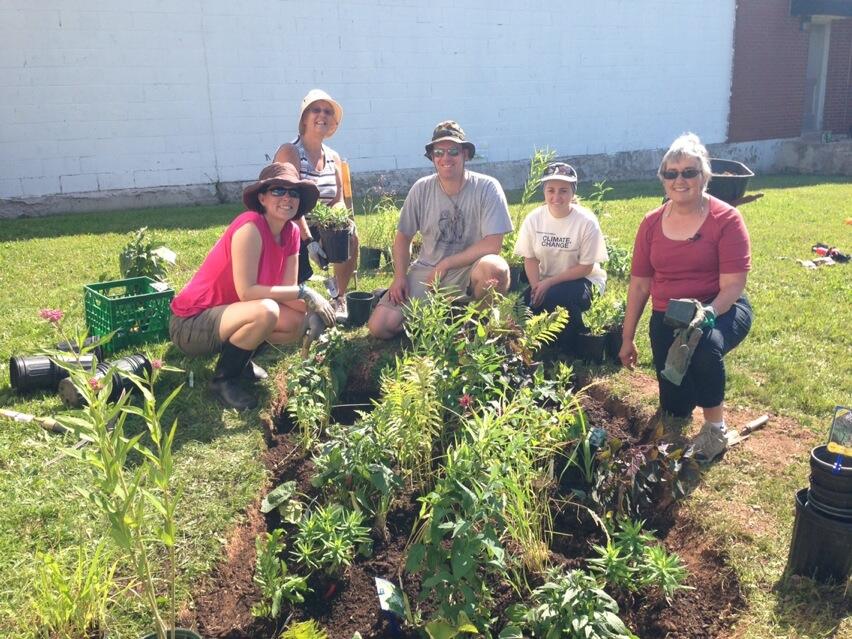DORCHESTER NB –

As the province continues to clean-up from post-tropical storm Arthur, many are wondering how to deal with increased storms and flooding in the region.
A local environmental group from Sackville, NB has developed a solution — rain gardens that help catch run-off and keep storm drains from overflowing.
A group of volunteers were old planting a rain garden at the Dorchester Consolidated School in Dorchester, NB, about 35 kilometres south of Moncton, Saturday morning.
Rain gardens take a bit of work to plant: you need to dig down 20 cm into the ground, so the rain gathers in the pit, rather than with a conventional garden, where the earth is often mounted.
Some of the volunteers on Saturday had experienced spongy, moist earth on their own properties.
“There’s a lot of springs in the hills behind us,” said Susan Spence, a Dorchester resident who came out to help plant the garden, of her property. “So it tends to make some of the areas a little wet. So I was hoping to come here today to figure out what type of plants I could plant to help soak up some of that water.”
Squishy earth is not the only problem in Dorchester, project leader Amanda Marlin said the area experienced flooding earlier this year.
“In the spring, certainly, Dorchester saw some serious flooding after days of rain and when the snow was melting,” she said. “So they had one of their major routes into town cut off for a number of weeks.”
Marlin is the executive director of Eos Eco Energy. The group has received a $20,000 grant from the New Brunswick Environmental Trust Fund to plant six gardens in the Tantramar region this summer. They already planted two in Port Elgin, and will be planting a second garden in Dorchester and two gardens in Memrancook.
The group planted three gardens in Sackville last summer and Marlin said they are doing very well.
The rain gardens use plants with deep roots to trap the rain. The roots break up the earth around them and force the rain water to drain through several layers of dirt.
According to Marlin, a rain garden will absorb 30 per cent more rain than a regular lawn.
“Rain gardens really mimic a natural space, whether it’s a meadow, forest floor or edge of a wetland; that sort of thing.” she said. “That’s what we’re trying to rebuild on our lawns.”
The rain garden will be used to teach kids at Dorchester Consolidated School about climate change and the environment.
It is also meant to inspire people in the community to try it as well.
“I thought I might try a small one,” said volunteer Spence. “I’ve got some names of some plants today that they planted, so I’m going to see if I can’t get a couple and try it.”
Instructions for planting a rain garden can be found online.
There are calculations to follow to figure out the correct size garden, depending on property size and whether it’s capturing water from a roof or down spout.
If it is constructed properly, water will not stay very long in the garden, so Marlin said it is not a breeding ground for mosquitoes.
If you are planning to plant a rain garden, it’s important to put it at least three meters away from the foundation of your house, according to Marlin.




Comments